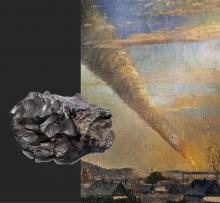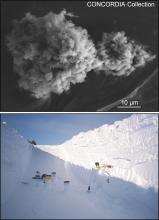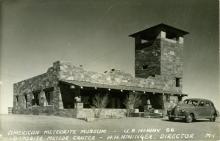Listen to today's episode of StarDate on the web the same day it airs in high-quality streaming audio without any extra ads or announcements. Choose a $8 one-month pass, or listen every day for a year for just $30.
You are here
Meteor Trains
For fans of rail travel, “meteor train” may evoke images of a classic rail line of the early 20th century, or of Amtrak’s modern-day silver meteor train. For skywatchers, though, the phrase conjures different images: glowing streaks in the night sky than can last for a long time.
And tonight is a good night to look for them, because the Leonid meteor shower should be at its peak.
A meteor shower flares to life when Earth flies through the path of a comet. Tiny bits of rock and dirt shed by the comet slam into the atmosphere at high speeds. They quickly vaporize, forming the trails of light known as meteors.
Most meteors last only a second or two. But a few leave behind longer-lasting trails, known as persistent trains. They’ve been known to keep glowing for several minutes.
Recent studies say they may form when metal-rich bits of comet dust burn up. They react with oxygen in the upper atmosphere. That continues to heat the atmosphere well after the meteor itself has vanished. The trains seem to be a little more common among slower meteors than faster ones.
The trains also produce radio waves. Today, scientists are using an array of radio telescopes to study these rare but beautiful sights — bright trains chugging across the sky.
The Leonids should be at their best between midnight and dawn. Under dark skies, you might see up to a dozen or so meteors per hour — and perhaps a few persistent trains.
Script by Damond Benningfield





